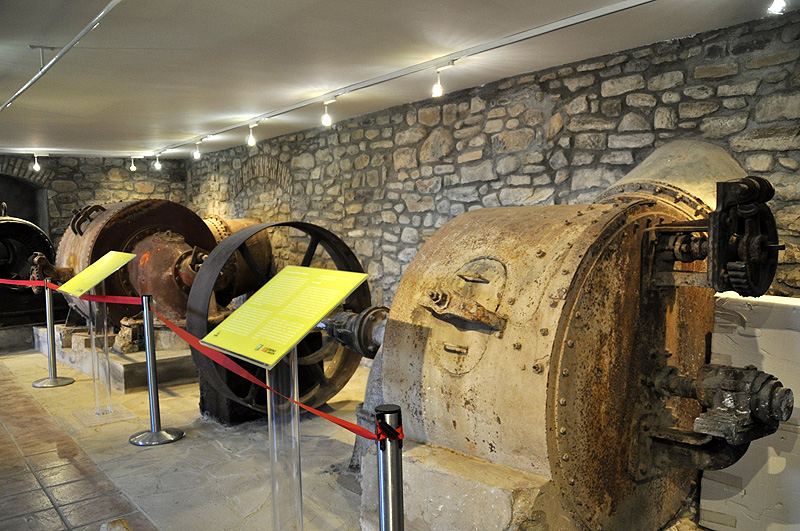Puente la Reina de Jaca. Mill Museum (Azorito Mill)
Oficina de Turismo
Carretera Jaca-Pamplona - 22753 PUENTE LA REINA DE JACA
T. (+34) 974377201
aytopuentelareinadejaca@hotmail.com
http://www.puentelareinadejaca.es/
Since medieval times, and until its abandonment in the 14th century, a town called Astorito existed near the present village of Puente la Reina, although its exact location is not entirely clear. The town was mentioned as the end of a stage of the pilgrim's route in the 5th book of the Calixtinus Codex, written in the 12th century by the French cleric Aymeraud Picaud. But even before that, the old bridge, the remains of which are to be found a few metres upstream from the present bridge (built in 1880 by the engineer Saturnino Bellido), was known in 1084 as the Astorito Bridge.
According to some historians, Astorito must have been an occasional place of residence for the Aragonese royal court during the 11th century. The French abbey of Selva Mayor and the nuns of Santa Cruz de la Seros had properties there, according to documents from 1084 to 1086. Queen Felicia, second wife of Sancho Ramirez, received as part of her dowry the royal seats of Bailo and Astorito, including the bridge.
There are various documents that refer to the existence of the mill at Azorito (or Astorito) from the 18th century onwards. Having been a flour mill since its construction, it ended up housing one of the first “mini” hydroelectric generating stations of the Jacetania Area. Today, after the restoration and recovery of the building and part of its original workings, it is now the home of some of the Jacetania Area’s administrative offices, as well as exhibiting part of the old machinery that was used for the production of electricity on the ground floor.
Ver Museo del Molino en un mapa más grande
Also consult...
¤ Monuments
¤ Nature
¤ Villages
¤ Sport
¤ Tourist Offices
¤ Museums and Interpretation Centres
Guided tours 360°
Ciudadela de Jaca
[Español] · [Inglés]
Monasterio de San Juan de la Peña
[Español] · [Inglés]
Fort du Portalet
[Español] · [Francés]
follow us in...




 Comarca de La Jacetania
Comarca de La Jacetania
C/ Ferrocarril s/n 22700
JACA (Huesca)
T. (+34) 974 356 980
F. (+34) 974 355 241
:: Oficina de Turismo de JACA: 974 360 098
:: Oficina de Turismo de CANFRANC:
974 373 141
Site Map









